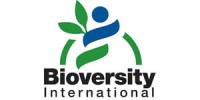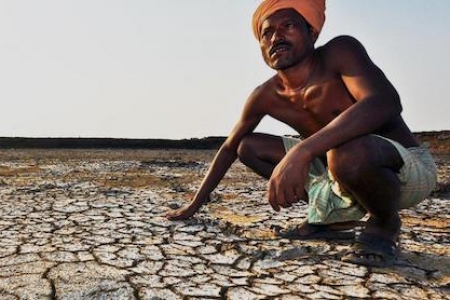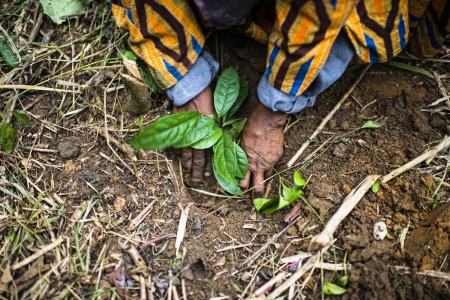Intra- and interspecific diversity of agricultural biodiversity is one of the principle mechanisms that pest and disease regulating services are provided by agricultural ecosystems and landscapes. As much as 30% of the global harvest losses to pests and diseases occur in developing countries. The continuing evolution of tolerant species of pests and pathogens that are able to overcome resistance genes of modern breeding requires an increased use and reliance on pesticides with consequences for environmental externalities (e.g. water quality) and human health. Landscapes sown to uniform varieties (modern or local) are prone to increased vulnerability to pests and diseases that can spread rapidly (e.g. the Irish potato famine caused by the late blight pathogen in the 1840s; the southern corn leaf blight in the US in the 1970s; the fungal disease black sigatoka responsible for about 47% of yield loss in Central American countries; cassava mosaic virus causes yield losses of up to 40% in some parts of Africa). Until recently IPM methods have concentrated on using agronomic techniques to modify the environment to reduce the need for pesticides, making limited use of the opportunities offered by the effective deployment of the intraspecific diversity of local crop varieties themselves. This project concentrates on management of local crop cultivars as a key resource for pest and disease regulation for a globally agreed set of staple crops for the specific pest and disease systems in China, Ecuador, Morocco, and Uganda: (i) maize (Zea mays): northern leaf blight (Setosphaeria turcica) and stem borer; (ii) common bean (Phaseolus vulgaris): angular leaf spot (Phaeoisariopsis griseola), anthracnose (Colletotrichum lindemuthianum), rust (Uromyces appendiculatus), and bean fly (Ophiomyia phaseoli; O. spencerella); (iii) faba bean (Vicia faba): aphids (Aphis fabae), chocolate spot (Botrytis fabae), seed pod weevil (Bruchus rufimanus; B. dentipes); (iv) banana and plantain (Musa spp.): black leaf streak (black sigatoka; Mycosphaerella fijiensis), Fusarium wilt (Fusarium oxysporum f. sp. cubense), nematodes, and weevils (Cosmopolites sordidus); (v) Durum wheat (Triticum turgidum L. subsp. durum): Septoria leaf blotch (caused by Zysomoseptoria tritici) and brown rust (Puccinia recondita f. sp. Tritici); and (vi) rice (Oryza sativa): rice blast (Pyricularia grisea) and rice plant hopper (Nilaparvata lugens).. By concentrating on intra-specific diversity as an ecosystem service based approach to pest and disease regulation, we highlight ecological mechanisms that reduce field, farm, and landscape vulnerability to pest and disease outbreaks. To date, a global collaboration of national researchers from four countries, have been supported to train national site-level personnel in common participatory approaches and technical assessment of genetic diversity, pathogens and pests incidence, and in the implementation of on farm experimental trials. Ministries of Agriculture, NARS and local governments in all four countries have provided policy support and allocated staff and students to work with farmer communities on integrating the use of crop varietal diversity good agronomic practices to manage pests and diseases. Local research stations, extension and local NGOs support capacity building and mainstreaming methods to manage pest and diseases, including providing good quality clean diverse seeds, and knowledge of pest and disease symptoms identification for better on farm management. Early results of field trials and other project activities include: (a) finding that increased diversity of crop varieties distribution across farmers’ fields and agricultural landscapes corresponds to a decrease in mean crop damage levels and reduced risk to future damage (b) Multi-landscape on-farm experiments identified varieties with more effective resistance to pests and diseases when grown outside their home landscape emphasizing the need for landscape scale mobilization of intraspecific diversity for pest and disease based regulating ecosystem services; (c) Intra-specific (variety) mixtures with non-uniform resistance tested in all countries and specific cases where mixtures out-performed their component monocultures in reducing crop damage and increasing yields identified for further testing; (d) Locally identified resistant materials integrated into national resistance breeding procedures with farmer selection criteria; (e) Clean diverse sets of seeds provided from community seed banks have increased production for small holder farmers in some of the sites up to 30%; (f) An unexpected benefit was these community seed banks acted as a meeting point for household members which adds social cohesion by providing a common means for the communities to improve production and income; (g) Training materials were developed, and over 3 000 farmers, extension, students, and researchers trained; (h) a damage abatement methodology and choice experiments developed to determine economic trade-offs using crop genetic diversity versus other IPM, resistant breed varieties or chemical input methods; and (i) Knowledge products: radio and television programmes, videos, drama, booklets, website articles and posters and peer-reviewed publications jointly authored by national partners. The long-term benefits of this initiative will be increased human capacity of male and female farmers to improve their incomes through the development of the skills, knowledge and enabling environment to use crop biodiversity to reduce crop loss from pests and diseases. Farmers will be empowered to use diversity and conserve it for future use. Rich and unique crop biodiversity, which form the basis for food security will be available to poor male and female farmers in the quality, quantity, and diversity needed to buffer against the increasing unpredictability in the amount and onset of rainfall, temperature extremes, and the frequency and severity of pests and pathogens. Not only will different varieties be availed which are adapted to new landscape conditions, but that diversity per se, i.e., sets of varieties with variation in functional or adaptive traits, will minimize the risk of crop loss under changes in pest and pathogens. Three complementary dimensions will be essential to ensure that farmers increase their ability to benefit from the use of crop genetic resources in their agricultural production systems to regulate pest and disease. The first will be to ensure that variation in resistance to key pests and diseases continues to exist in rural landscapes and be accessible for small-holder farmers from local communities and through seed networks supported by national programs. Second that the policy environment supports the use and benefit-sharing with farmers of the diversity for agricultural productivity and ecosystems resilience, and third that the farmers in these landscapes have the knowledge, institutions and leadership capacity to evaluate and use the benefits that this diversity provides them with. By adding intraspecific diversity, this project is working to reduce current crop loss, like other IPM methods, but also to reduce the probability of future crop loss, where target crops will be resilient to future changes in pests and pathogens (CGIAR IDO on Future Options). We posit that crop genetic diversity can regulate pest and diseases for specific landscapes and farm where there is variation in the host (crop inter- and intraspecific diversity) to the pest in question. However, we are aware that crop genetic diversity may not be the solution in all cases. Although the information is collected at the farmer’s field, it is collected from households across the larger agrocological landscape and the level of analysis is both at farm and at the agricultural landscape level. In this regard, GPS coordinated are collected for each household accompanying with information collected not only on the level of intra-specific diversity, but also the pest and disease damage and levels of pesticide use. Initial maps have already been made for China, Morocco, and are on-going for Uganda and Ecuador. We are using this information to look within each agroecological landscapes whether diversity is having an impact on reducing disease damage at the landscape level. Our up-scaling is concerned with diversity deployment in space from farm to community and across community to the landscape level. Questions such as: is it good to put all the diversity out there or not; and at what spatial scale should diversity be deployed are key to this work. Wheat stem rust (UG99) is a good example of a landscape level threat where single cultivars grown over larger areas has evolved a super-race pathogen that has become a serious threat to landscape level production. Thus, this work has many large-scale implications and aims to answer how much diversity (intra-specific) needs to be deployed at the landscape scale to avoid such super races from continuing to evolve.
menu










